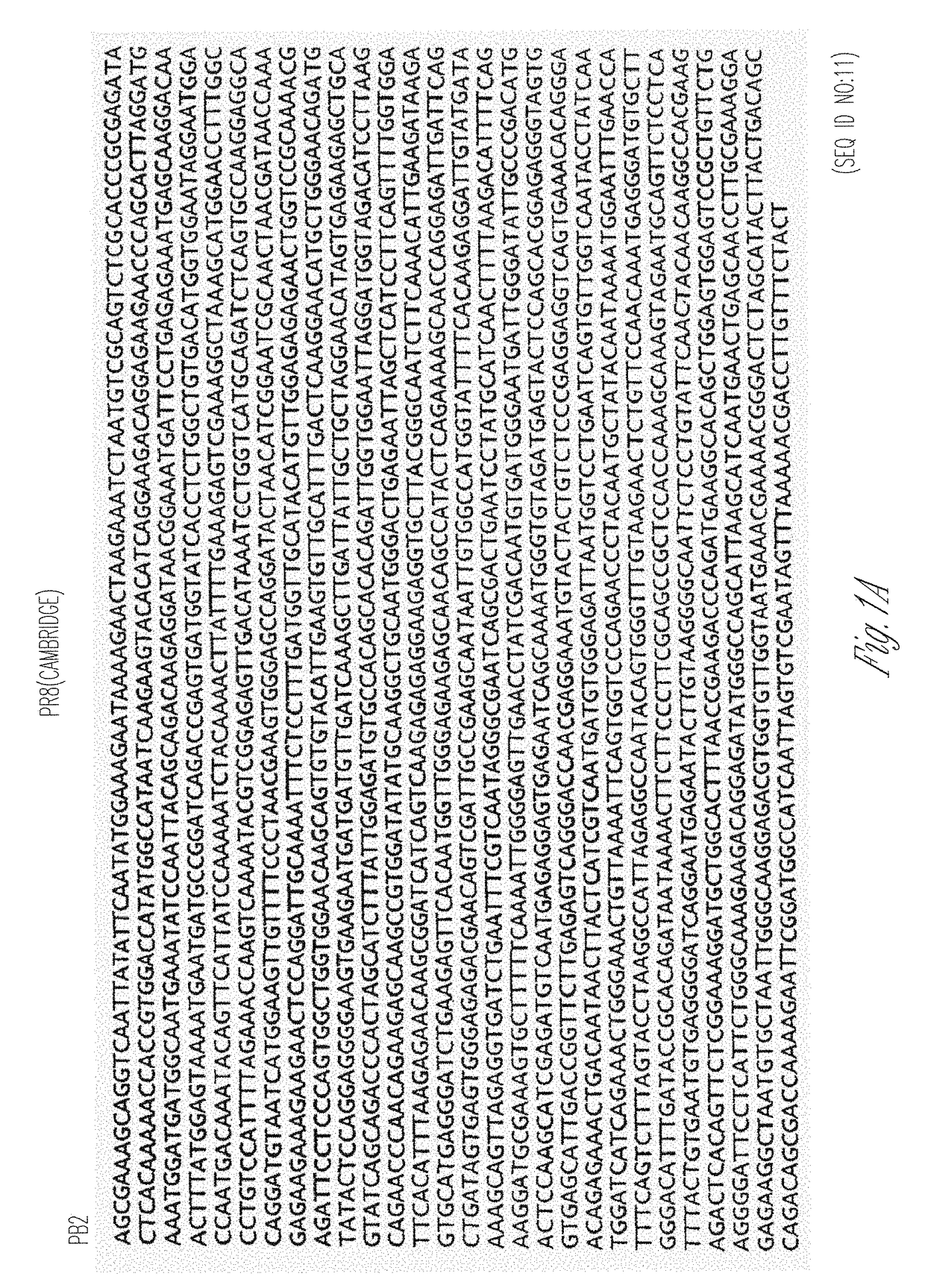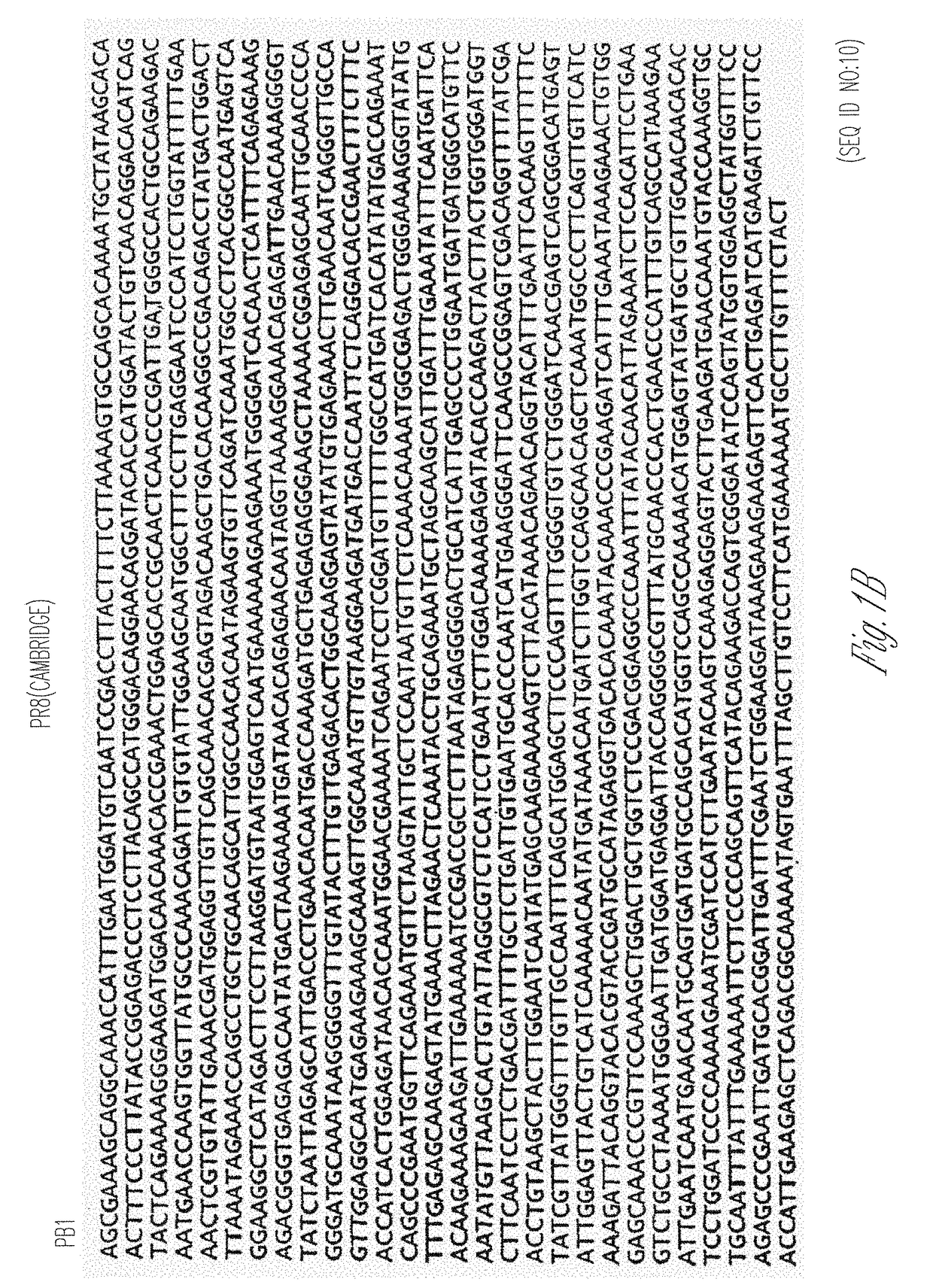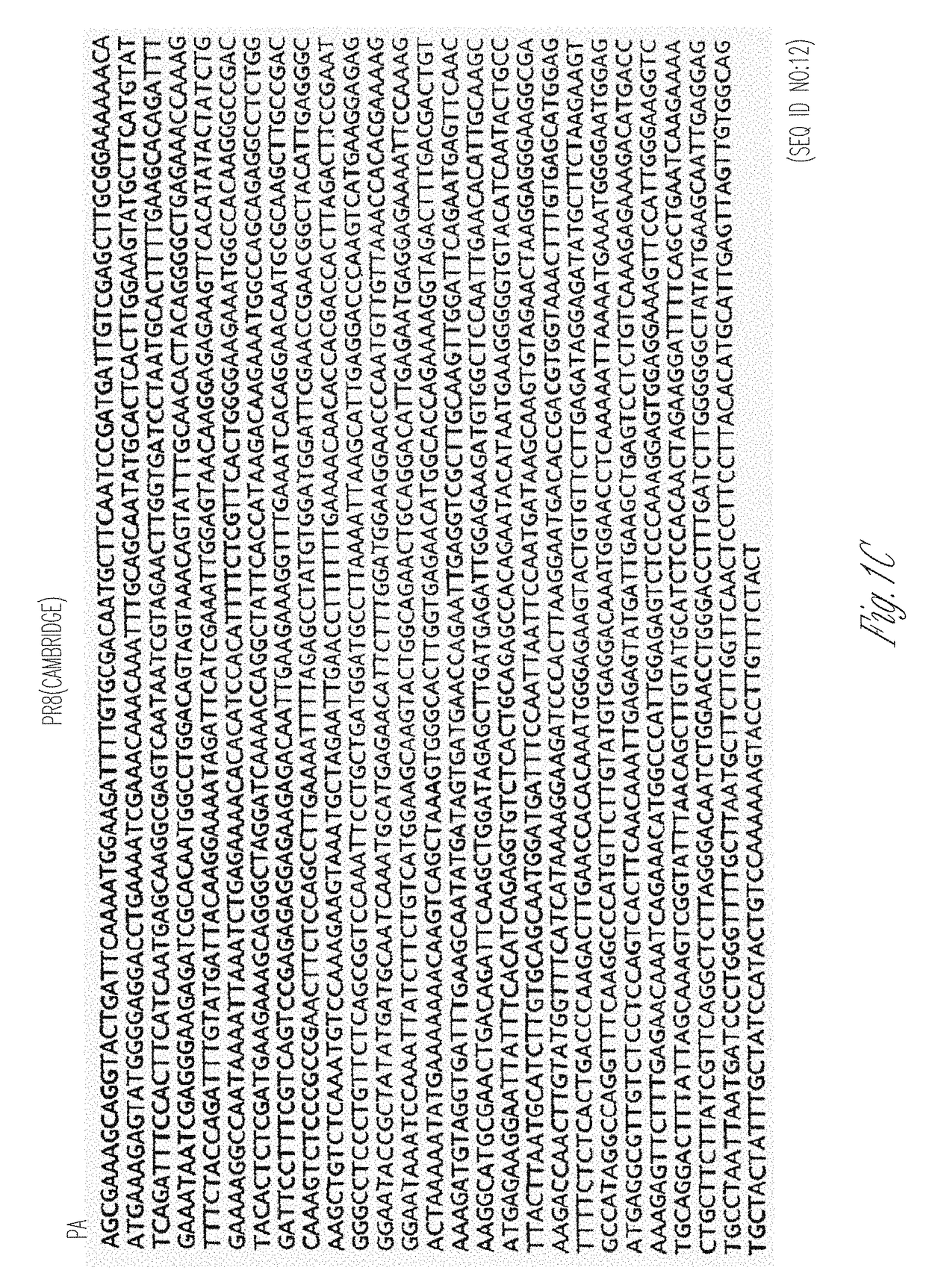Influenza virus replication for vaccine development
a technology of influenza vaccine and virus replication, which is applied in the field of influenza virus replication for vaccine development, can solve the problems of substantial morbidity and economic loss, and achieve the effect of enhancing viral growth and increasing the yield of influenza vaccine viruses
- Summary
- Abstract
- Description
- Claims
- Application Information
AI Technical Summary
Benefits of technology
Problems solved by technology
Method used
Image
Examples
example 1
Methods
Cells and Viruses
[0124]293T human embryonic kidney cells are maintained in Dulbecco's modified Eagle's minimal essential medium (DMEM) with 10% fetal calf serum and antibiotics. Madin-Darby canine kidney (MDCK) cells are grown in MEM with 5% newborn calf serum and antibiotics. African green monkey Vero WCB cells, which had been established after biosafety tests for use in human vaccine production (Sugawara et al., 2002), are maintained in serum-free VP-SFM medium (GIBCO-BRL) with antibiotics. Cells are maintained at 37° C. in 5% CO2. A WHO-recommended vaccine seed virus is NIBRG-14.
Construction of Plasmids and Reverse Genetics
[0125]To generate reassortants of influenza A viruses, a plasmid-based reverse genetics (Neumann et al., 1999) is used. The full-length cDNAs were cloned into a plasmid under control of the human polymerase I promoter and the mouse RNA polymerase I terminator (Poll plasmids).
[0126]A previously produced series of Poll constructs, derived from A / WSN / 33 (H5...
example 2
[0133]To develop an high-yield A / PR / 8 / 34 (H1N1; PR8) virus backbone for growth of vaccine virus in specific host cells, random mutagenesis of the internal genes of PR8(HG) (PR8UW) was conducted. Random mutations were introduced into the UW-PR8 (Example 1) internal genes by error-prone PCR, after which plasmid libraries were prepared that possessed the random mutations in an individual UW-PR8 internal gene. Then virus libraries (PR8 / H5N1) were generated that possessed random mutations in an individual UW-PR8 internal gene, along with the other wild type internal genes and the NA and ‘detoxified’ HA genes of A / chicken / Indonesia / NC / 09 (H5N1) virus (Table 1), to generate “6+2” recombinant viruses. Consecutive passages of the virus in MDCK cells were employed to select for variants with high-growth properties.
[0134]
TABLE 1Virus libraries generatedTiter ofInternal genesvirusOther internallibraryNumberGene librarygenesHA + NA(pfu / ml)ControlPR8 wild typeNC / 09 / H5N1 3 × 1061PB25 UW-PR8 genes...
example 3
[0151]To assess the contribution of individual viral RNA (vRNA) segments to high-yield properties, a series of reassortant viruses was generated that possessed one or several vRNA segments of a high-yield PR8 (PR8-HY) variant in the background of the parental virus [UW-PR8_Indo / 05(HA+NA)]. Vero cells were infected in triplicate with the indicated viruses at a MOI of 0.005 and incubated at 37° C. in the presence of trypsin. At the indicated time points, virus titers and HA titers were determined by performing plaque or HA assays, respectively. The results are shown in FIG. 20. These data indicated that several vRNA segments contribute to the properties of PR8-HY virus. In particular, the PB2+PB1+PA+NP vRNAs of PR8-HY virus conferred an appreciable increase in virus and HA titers, evidencing the enhanced replicative ability of this virus.
[0152]To further assess which component of the viral replication complex that provides for high-yield properties, wild-type or high-yield PB2, PB1, P...
PUM
| Property | Measurement | Unit |
|---|---|---|
| MI | aaaaa | aaaaa |
| stability | aaaaa | aaaaa |
| length | aaaaa | aaaaa |
Abstract
Description
Claims
Application Information
 Login to View More
Login to View More - R&D
- Intellectual Property
- Life Sciences
- Materials
- Tech Scout
- Unparalleled Data Quality
- Higher Quality Content
- 60% Fewer Hallucinations
Browse by: Latest US Patents, China's latest patents, Technical Efficacy Thesaurus, Application Domain, Technology Topic, Popular Technical Reports.
© 2025 PatSnap. All rights reserved.Legal|Privacy policy|Modern Slavery Act Transparency Statement|Sitemap|About US| Contact US: help@patsnap.com



